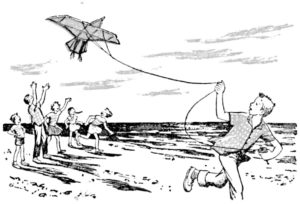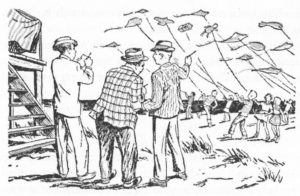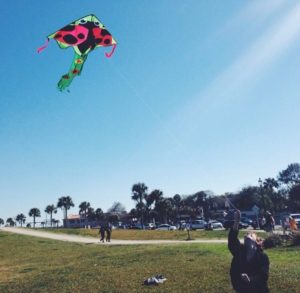From China to Kitty Hawk to Sea Gull Beach: The Unique History of the Kite

One of the earliest accounts of kite flying comes from China in 200 B.C. An army general of the Han Dynasty used an ancient version of a kite to fly over the walls of an enemy city, measuring how far his troops would have to travel to get past the opposing army’s defenses. Over the years, the use of kites for military purposes grew in popularity across Asia and spread to Europe as explorers like Marco Polo observed other cultures using kites in warfare. By the 13th century, other cultures had developed their own styles of kites and began to use them for other practical purposes, like checking the speed and direction of the wind before embarking on a sailing voyage. Still, kites were used for military purposes for many years and even played a role in World War I and World War II, when American forces and their allies used kites for signaling and enemy observation.
Eventually, modern technology like drones began to replace kites in the military, but they continued to serve many interesting purposes. Many scientists and inventors have used kites throughout the years; one of these was American founding father and inventor Benjamin Franklin, who famously flew a kite during a thunderstorm to explore electricity in 1752. Like Franklin, many other early curious inventors used kites in their experiments on everything from weather to weight.

Today, kites are primarily used for fun and sports. Kite flying is a favorite activity for many, adults and children alike, with kites coming in a variety of fun shapes, colors, materials, and sizes, like the doll- and seagull-shaped kites that Pam and Pete make. Hardcore enthusiasts can also compete in a wide array of kite flying competitions like the one held at Sea Gull Beach.
The next time you have a breezy day, go to a favorite outdoor area and watch someone fly a kite—or better yet, fly one yourself and experience the activity that has been captivating people around the world for thousands of years.
Libby Svenson Kennedy; St. Augustine, FL
Sources:
Research notes, Andrew Svenson Archives of The Hollister Family Properties Trust
https://www.kite.org/about-kites/history-of-kites/
https://airandspace.si.edu/exhibitions/wright-brothers/online/fly/1899/kite.cfm


